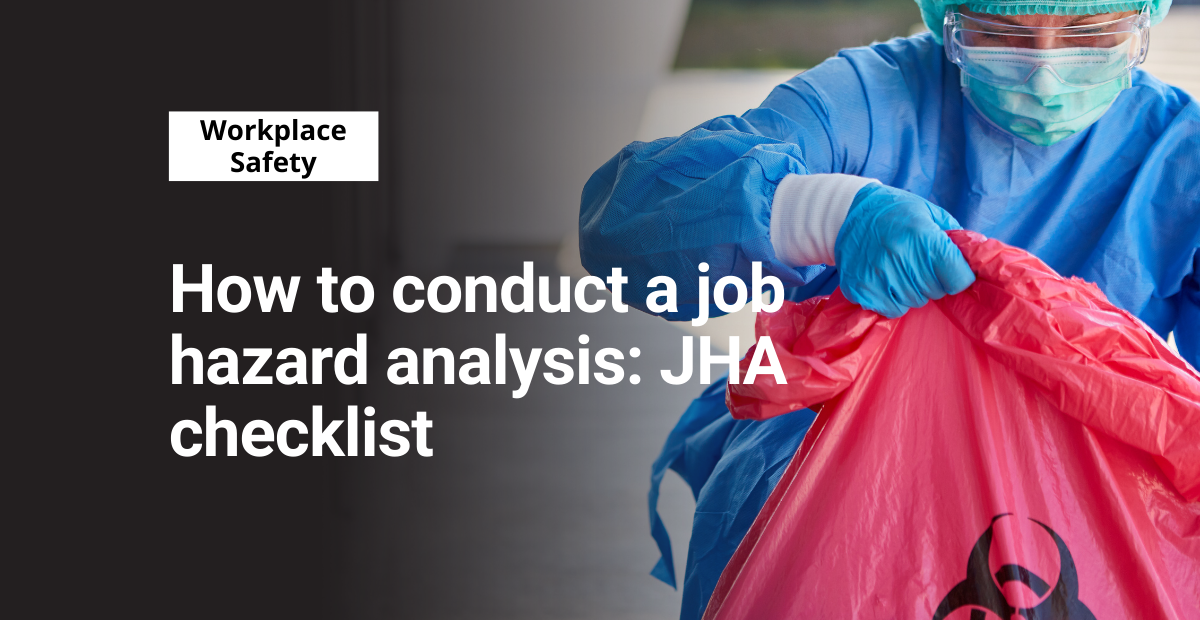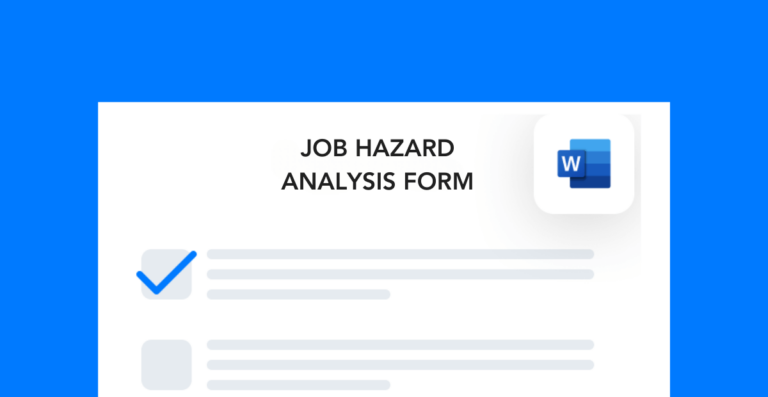A job hazard analysis (JHA), sometimes called a job safety analysis (JSA), is an important tool for identifying and reducing hazards in any industry. It’s a technique that identifies the dangers associated with specific job tasks and provides solutions to reduce the risk of an injury to workers.
Why it matters
According to the Liberty Mutual 2019 Workplace Safety Index, workplace injuries costs U.S. companies more than $1 million every week. The report lists top causes of the most serious injuries (those resulting in five or more days of workdays lost), and it’s based on information from the U.S. Bureau of Labor Statistics (BLS).
Examples of serious injuries include overexertion and falls from the same level. Many assume that these injuries occur in high-hazard job environments, but injury rates in retail are often higher than in manufacturing and construction.
So, why does conducting a JHA matter? Because, if you know what potential hazards exist for a particular job, you can reduce or eliminate them before any of your workers get hurt. You can also use a JHA to ensure that your workers are performing tasks correctly. These practices will save your organization costs associated with injuries.
Conducting a JHA
Here is a simple job hazard analysis checklist of things you want to do alongside your assessment:
1. Involve your workers: Your workers have a hands-on understanding of the job, which is invaluable in finding potential hazards. Involving your workers helps them take ownership of their own safety and strengthens your site’s safety culture.
2. Review your organization’s accident history: Past incidents will help you identify existing hazards that may not have had adequate protections and require further analysis.
3. Consult OSHA regulations: Referring to OSHA standards when you create action items following your analysis is important for ensuring that all your changes comply.
4. List, rank, and set priorities: When performing multiple JHAs, start with the jobs that have a high injury or illness rate. Then, move on to less critical areas of the operation.
These tips will enhance your analysis and make it easier for you to find valuable areas to improve.
Where to start
Break the job task into steps. Include enough information to describe each job task without getting overly detailed. Review the steps with your workers to make sure you did not miss something.
Getting input for the worker who performs the job is most valuable, but you can also identify the hazards of each step by asking yourself:
- What can go wrong?
- What are the consequences?
- How could it happen?
- What are other contributing factors?
- How likely is it that the hazard would occur?
Once you have your list of hazards, review it withworkers who do the job and seek their input on ways to eliminate or reduce the hazards.
Next steps
Now that you have the list of potential hazards, you must consider control measures to reduce or eliminate those hazards. You should select controls that are most feasible, effective, and permanent.
You accomplish this by involving your workers and using OSHA’s Hierarchy of Controls:
1. Elimination: Is it possible to physically eliminate the hazard entirely?
2. Substitution: Is it possible to replace the hazard?
3. Engineering Controls: Is it possible to create a physical barrier between your workers and the hazard?
4. Administrative Controls: Is it possible to change the process itself?
5. PPE: Is it possible to provide PPE that will protect your workers from the hazard? (This is always the last line of defense).
During this stage of the analysis, be specific when describing potential solutions. Look for small changes you can make to the process itself. There is always something you can improve, so you should always leave a JHA with at least one action item.
Once you have implemented your control measures:
- Train all workers that do the job on the potential hazards and control measures.
- Schedule a future review of the control measures to ensure they work as intended.
- Complete a new JHA when you introduce new equipment, change the task/process, or have a job-related safety incident.
Following this job hazard analysis checklist is the easiest way to continually improve your workers’ tasks. Plus, this forward thinking can help you avoid costly incidents and inefficiencies in the future.




